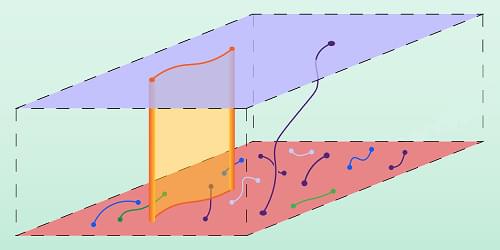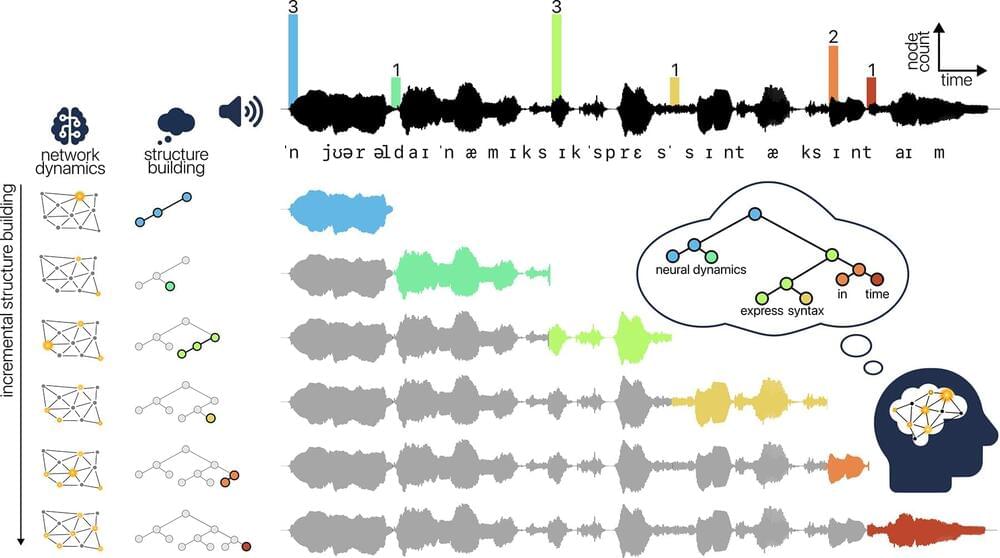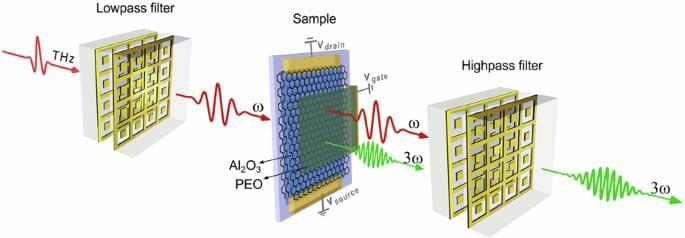Join the discussion on this paper page.


Dive into the fascinating world of the Cori Cycle, also known as the lactic acid cycle! 🏋️♂️💡 In this video, we’ll explore how your body manages energy during intense exercise by recycling lactate from muscles back into glucose in the liver.
Thank You For Watching.
Please Like And Subscribe to Our Channel: / easypeasylearning.
Join this channel to get access to perks:
/ @easypeasylearning.
Like Our Facebook Page: / learningeasypeasy.
Join Our Facebook Group: / 460057834950033
Support Our Channel: / supereasypeasy.
Do you want to make your VRChat character more true to life? You can use motion capture gear to ensure the most realistic movement. There is plenty of equipment to choose from, and 3D character designer Yueou demonstrated one that might interest you: UDCAP, “silk-like” gloves for SteamVR that track your hand gestures pretty accurately.
While there is a little delay, such gloves could be a great addition to your setup. The creator, Udexreal, promises 15 hours of battery work, so you don’t have to worry about your virtual social life ending early. There are 12 sensors that cover all 15 finger joints, providing a total of 21 joint angles.
“Our sensors are foldable and highly flexible, blending seamlessly with fabric without causing any discomfort. They capture even the slightest stress, stretch, and bend, with a resolution of 0.01 degrees,” the creators say.
When I saw the introduction of this game, the word “edutainment” popped up in my mind. It definitely turns coding into a more fun, satisfying activity.
“Use real Python code to automate machines, robots, drones and more: Program self-driving vehicles; crack passwords; apply machine learning; automate logistics; use image processing to guide missiles,” the description of JOY OF PROGRAMMING — Software Engineering Simulator reads.
There are various levels that are ready in the game, whose goals, mandatory or optional ones, can be solved with different valid solutions. When finishing the levels, you’ll gain stars, which are used to unlock new programming features.


Fast radio bursts (FRBs) are short blasts of radio waves whose origins remain a mystery. A new theoretical study explores a possible source in the atmospheres around highly magnetized neutron stars called magnetars [1]. Using numerical simulations, the researchers show that magnetar atmospheres can host powerful shock waves—or “monster shocks”—that produce gigahertz-frequency emissions, consistent with FRB observations.
The first reported observation of an FRB was in 2007, and since then astronomers have collected over a thousand bursts from across the sky. They seem to be connected to compact objects—such as neutron stars or black holes—located at large distances from Earth. “We know that they are cosmological, but their origin and production mechanism remain elusive,” says Arno Vanthieghem from Sorbonne University and the Paris Observatory. He and Amir Levinson from Tel Aviv University, Israel, have explored a possible connection between FRBs and magnetically driven shocks around magnetars.
Previous work has looked at FRB-producing mechanisms around magnetars, but Vanthieghem and Levinson are the first to explore shock-induced radio emission in the inner magnetosphere—the strong-magnetic-field region surrounding a magnetar. The researchers showed that a disturbance, such as a starquake occurring on the magnetar surface, can cause a magnetic-field wave to travel outward through the charged particles in the magnetosphere. They found that this wave can be amplified into a monster shock in which charged particles reach highly relativistic speeds. These particles emit a burst of radio waves that could be seen as an FRB by a distant observer. Vanthieghem says that future observations might be able to provide evidence for this mechanism by pinpointing the location of FRB emission within a magnetar’s environment.

Three theoretical studies have uncovered novel types of topological order inherent in open quantum systems, enriching our understanding of quantum phases of matter.
Nature showcases an extraordinary diversity of phases of matter, including many that can be understood only through the principles of quantum mechanics. Such quantum phases can exhibit topological order, characterized by long-range quantum correlations and exotic quasiparticle excitations. Despite extensive theoretical and experimental exploration over the past few decades, our knowledge of topological order has been largely restricted to closed quantum systems. However, real-world quantum systems are inevitably influenced by dissipation and decoherence, underscoring the need for a deeper understanding of open quantum systems—those that exchange energy, particles, or information with their surroundings. Now three research teams have identified new forms of topological order intrinsic to open quantum systems, expanding the spectrum of possible quantum phases and paving the way for advances in quantum information science [1– 3].
Conventionally, different phases of matter are classified based on symmetry. For example, ferromagnets break rotational symmetry since their magnetic moments align in a specific direction, even though the underlying physical laws remain invariant under spatial rotation. While this concept of spontaneous symmetry breaking has proven valuable, the past few decades have seen a new paradigm: topological phases of matter. Representative examples of these phases, such as fractional quantum Hall fluids and quantum spin liquids, display topological order [4]. This property does not arise from spontaneous symmetry breaking but from an intricate pattern of entanglement—nonlocal correlations central to quantum physics.

Trees need a certain number of warm days in their growing seasons to grow properly; otherwise, the cell walls of new growth don’t lignify properly, creating blue rings that appear when wood samples are dyed.
Since trees and shrubs can live for hundreds of years, identifying these blue rings allows us to spot cold summers in the past. By looking at pine trees and juniper shrubs from northern Norway, scientists identified two extremely cold summers in 1902 and 1877, possibly caused by the eruptions of Mount Pelée on the island of Martinique and Cotopaxi in Ecuador.
“Blue rings look like unfinished growth rings, and are associated with cold conditions during the growing season,” said Dr. Agata Buchwal of Adam Mickiewicz University, Poland, lead author of the article in Frontiers in Plant Science.

Do speakers of different languages build sentence structure in the same way? In a neuroimaging study published in PLOS Biology, scientists from the Max Planck institute for Psycholinguistics, Donders Institute and Radboud University in Nijmegen recorded the brain activity of participants listening to Dutch stories. In contrast to English, sentence processing in Dutch was based on a strategy for predicting what comes next rather than a “wait-and-see” approach, showing that strategies may differ across languages.
While listening to spoken language, people need to link abstract knowledge of grammar to the words they actually hear. Theories on how people build grammatical structure in real time are often based on English. In sentences such as “I have watched a documentary,” the noun “documentary” immediately follows the verb. However, in Dutch sentences, the word order may be reversed: “Ik heb een documentaire gezien” (“I have a documentary watched.”).
“To find out whether speakers of different languages build grammatical structure in the same way, it is important to look at languages that differ from English in such interesting respects,” says first author Cas Coopmans. “Findings based on English may not generalize to languages that have different grammatical properties, such as Dutch.”

The experimental configuration is shown schematically in Fig. 1. Sensitive detection of the THG signal requires the use of a lowpass filter (LPF), reducing the spectral width of the pump pulse and eliminating any residual pump at the third harmonic frequency. After the generation of the THG inside the graphene-based sample, a highpass filter (HPF) is used to limit the incident pump reaching the detection scheme. Although the HPF used in our experiment does not completely eliminate the pump, it still reduces the pump-induced noise at the third harmonic frequency to a value close to the noise floor. This technique relying on a HPF significantly increases the sensitivity of time-resolved detection to monitor the creation of new spectral components24,29. The general design of these filters are described in previous work31 and their spectral transmission properties are shown in Section 2 of the Supplementary Information. In brief, the LPF transmits multicycle THz pump pulse centered at the frequency, ω = 0.8 THz, and strongly attenuates (∼ 50 dB) spectral components beyond 1.5 THz. The HPF attenuates the pump pulse by 30 dB while transmitting the third harmonic at 3ω
We investigate six nonlinear samples consisting of stacked graphene sheets, from 1 to 15 layers, allowing us to vary the nonlinear interaction length. Figure 2a shows the spectrum of the THz pulse (blue line) transmitted through the LPF and used as the pump at the fundamental frequency ω. This graph only contains spectral measurements collected with the 1-, 3-, and 6-layer graphene samples (purple, green and red lines, respectively) for enhanced clarity of the display. A distinct THG spectral peak at 3ω = 2.4 THz can be observed with an intensity increasing roughly quadratically with the number of graphene layers (see Sections 1 and 3 in the Supplementary Information). The HPF, which role is to decrease the residual pump, allows the noise level at frequencies beyond 1.5 THz to settle close to the noise floor (grey shaded area), enabling sensitive monitoring of the nonlinear effects. Figure 2b shows the time-resolved multicycle pump pulse (blue line) with a peak amplitude of 32 kV/cm.